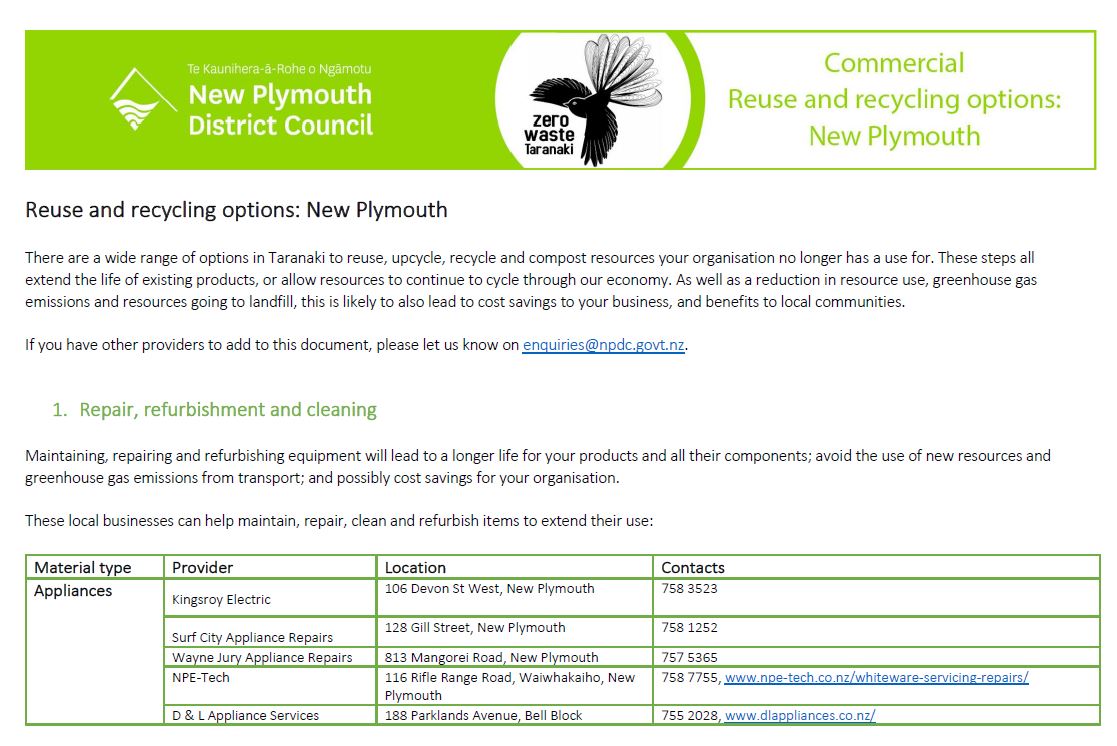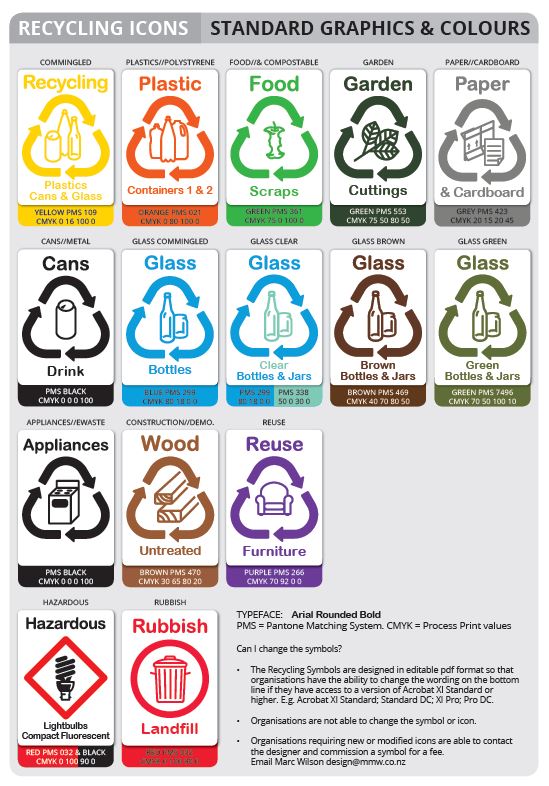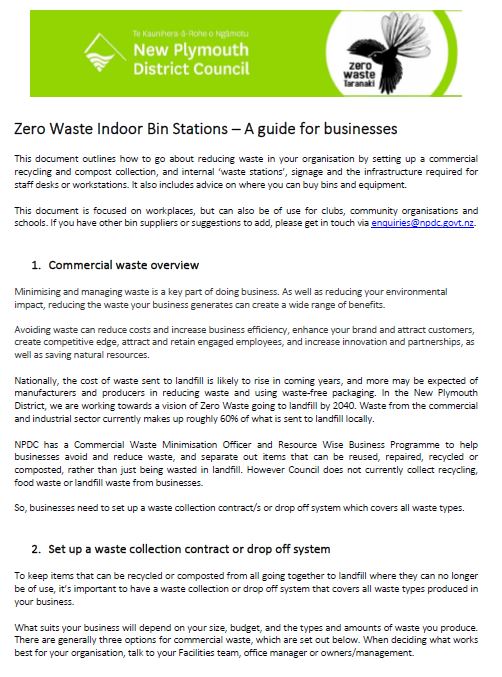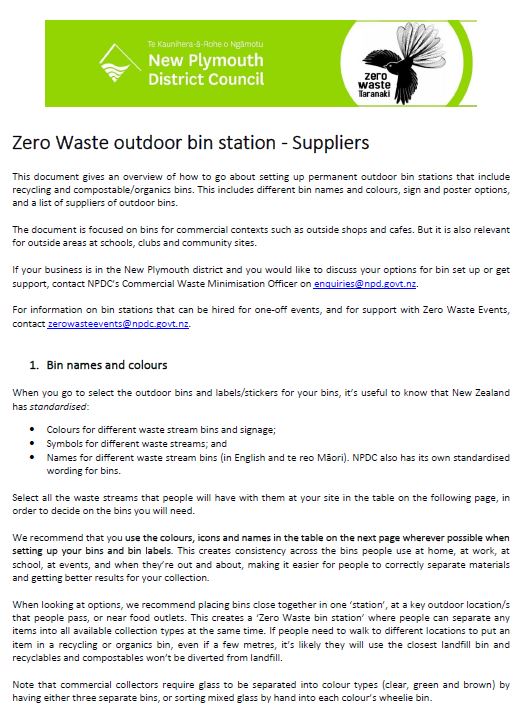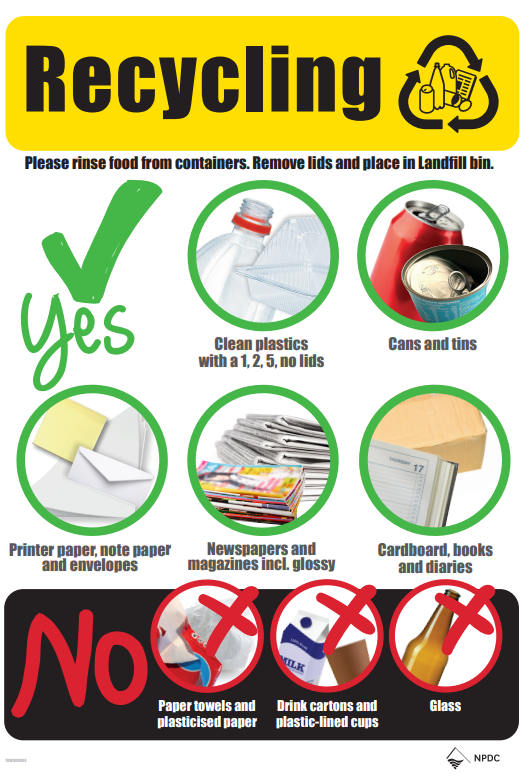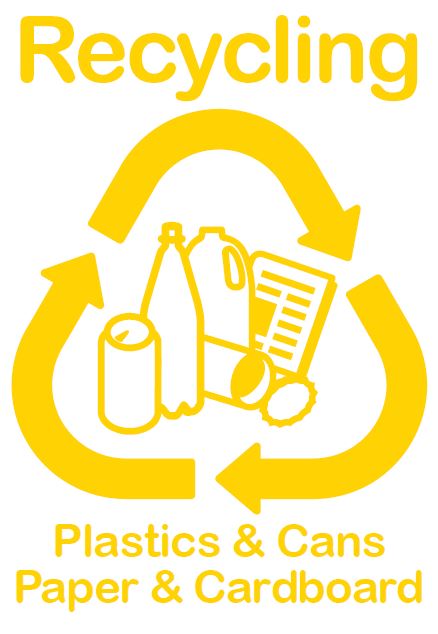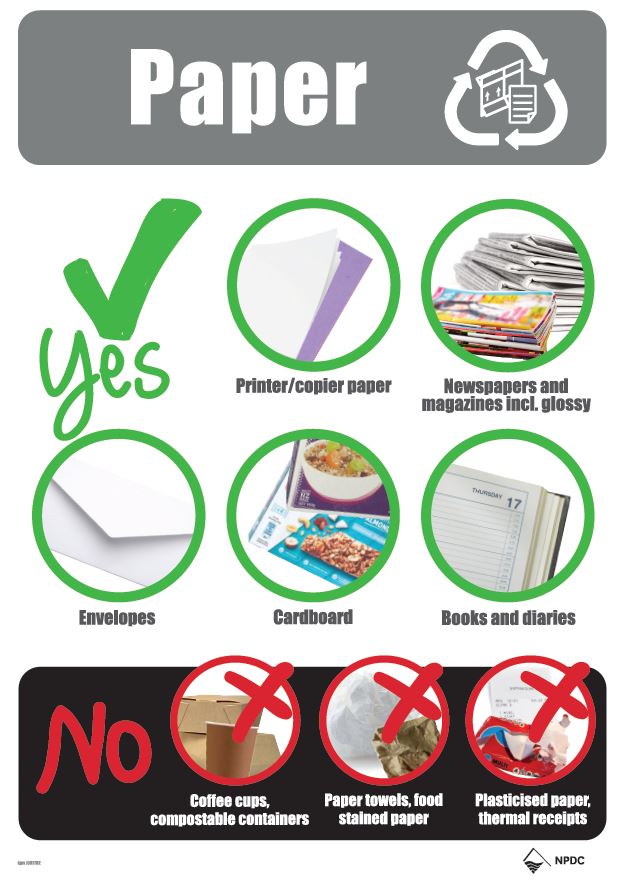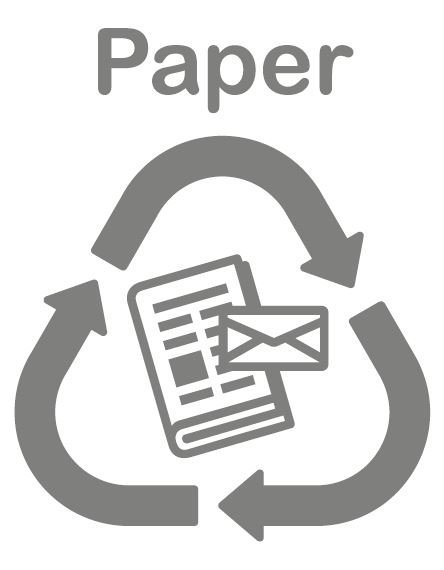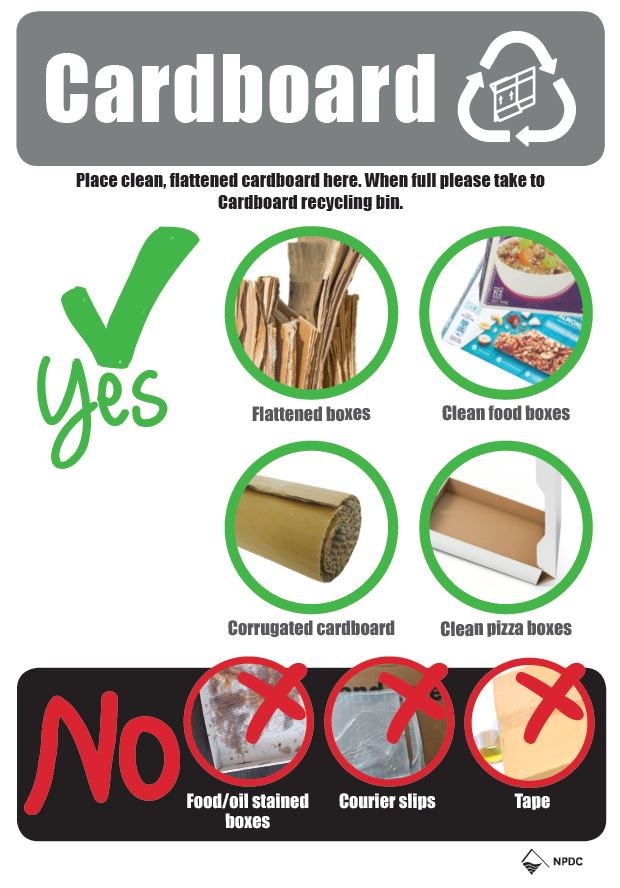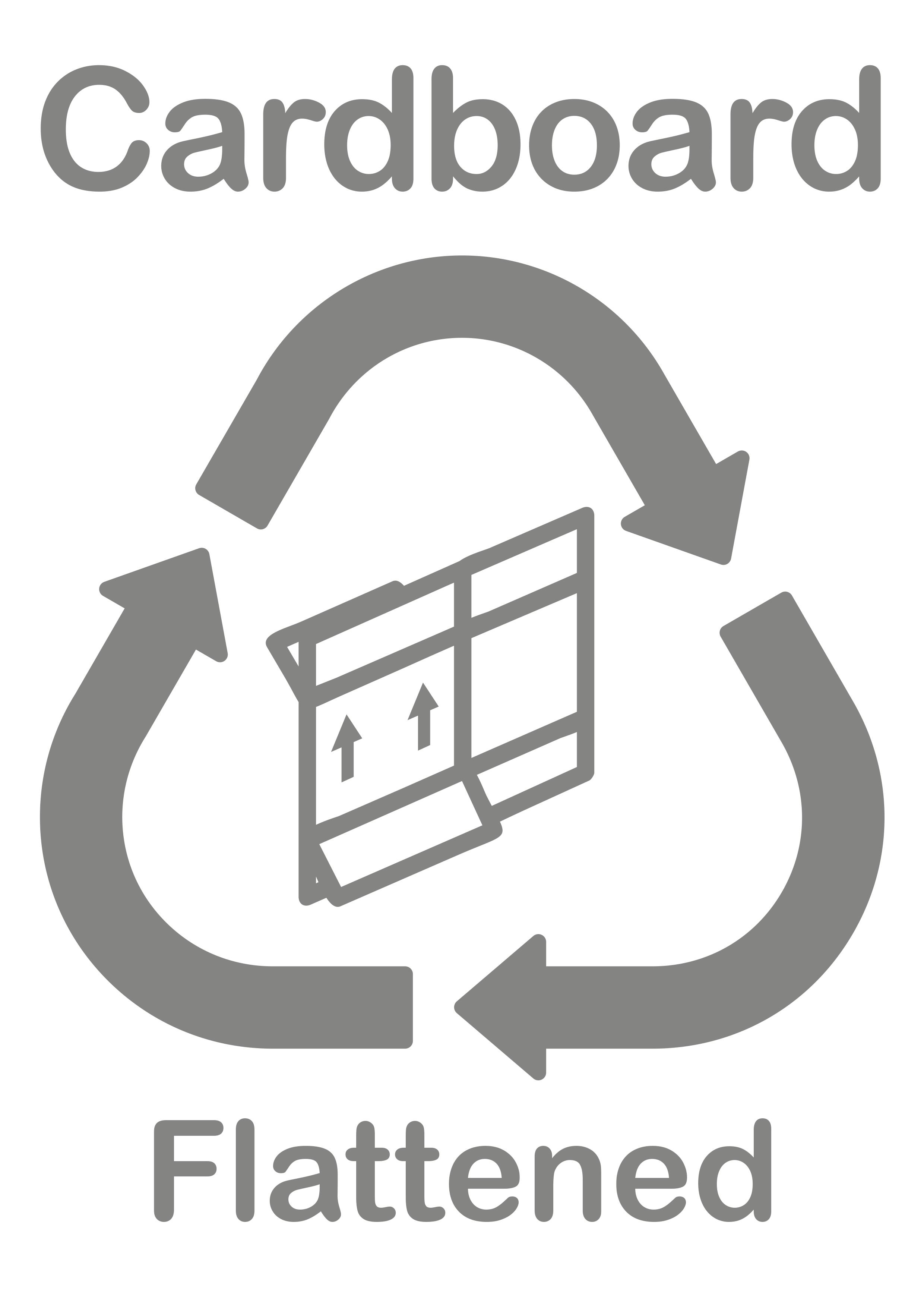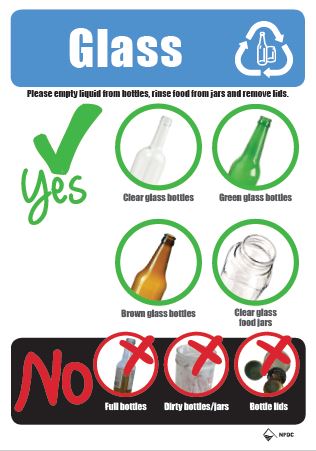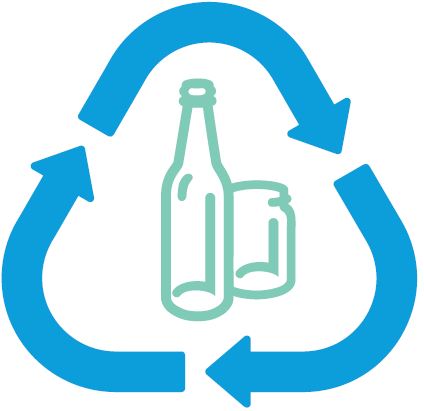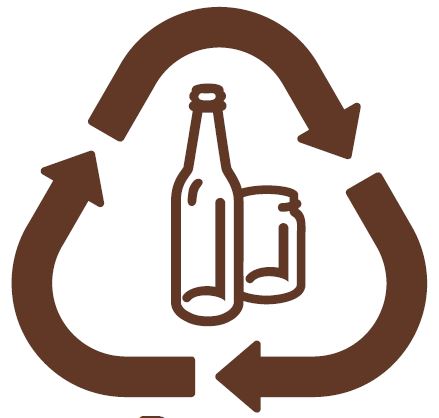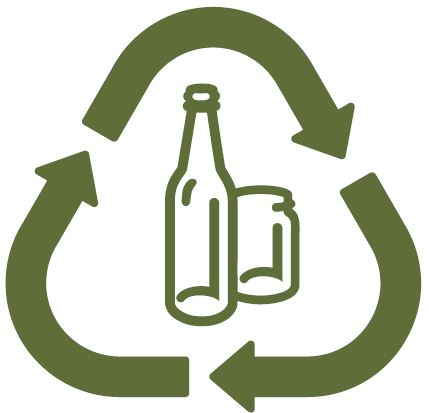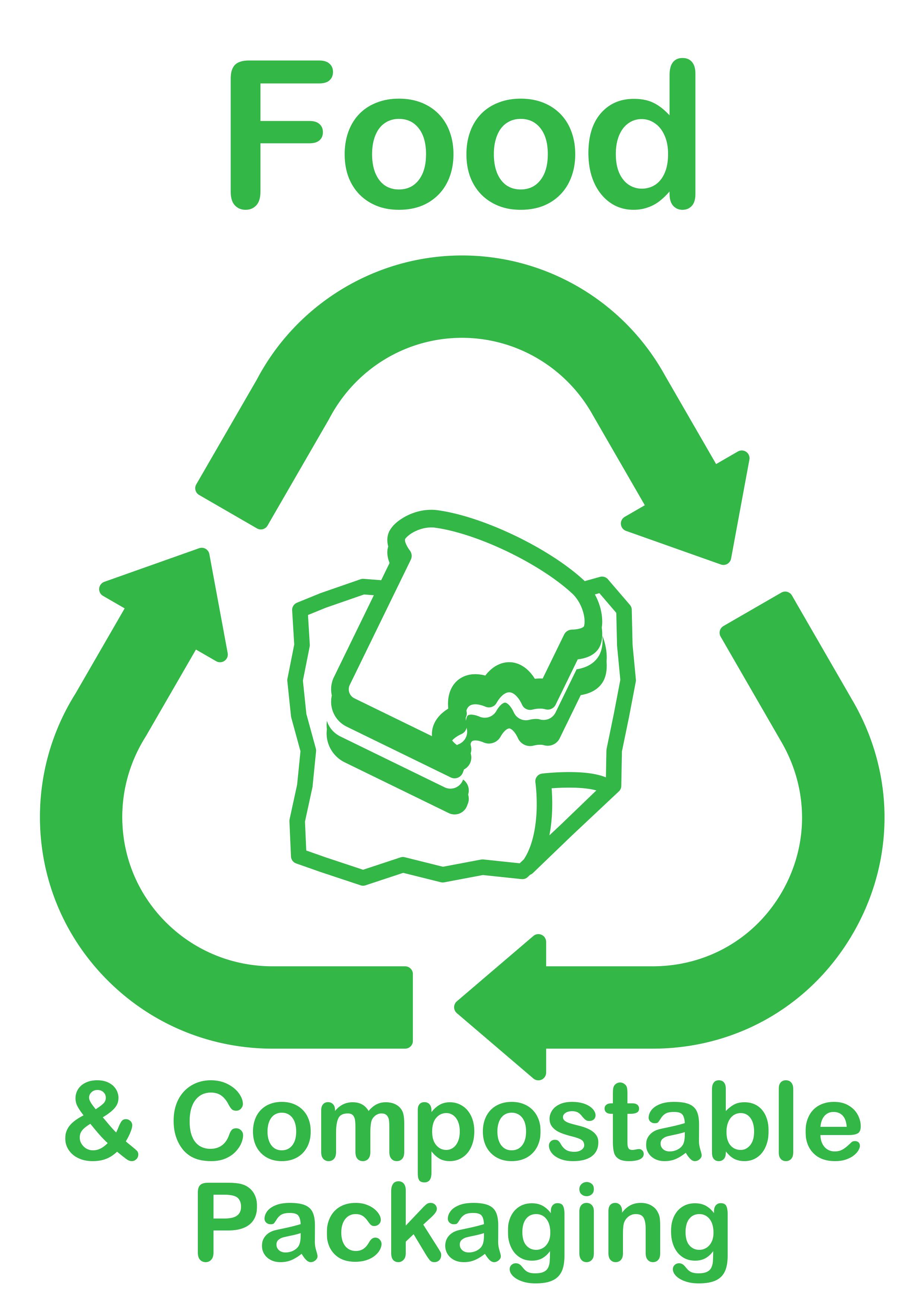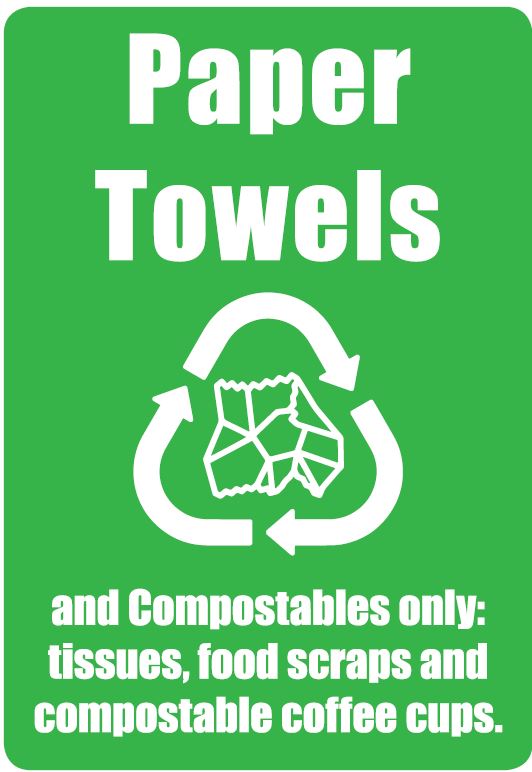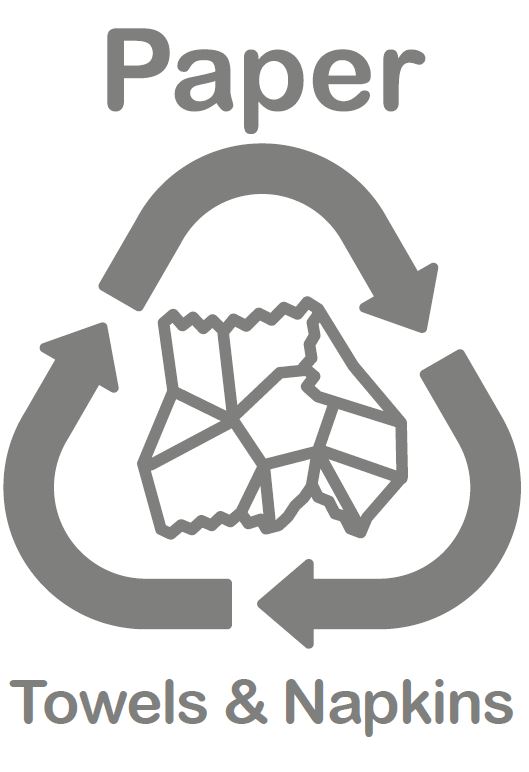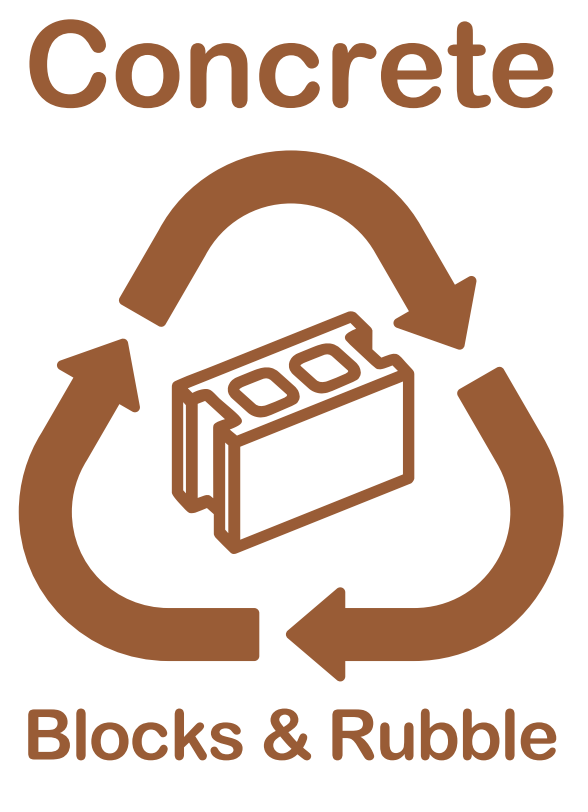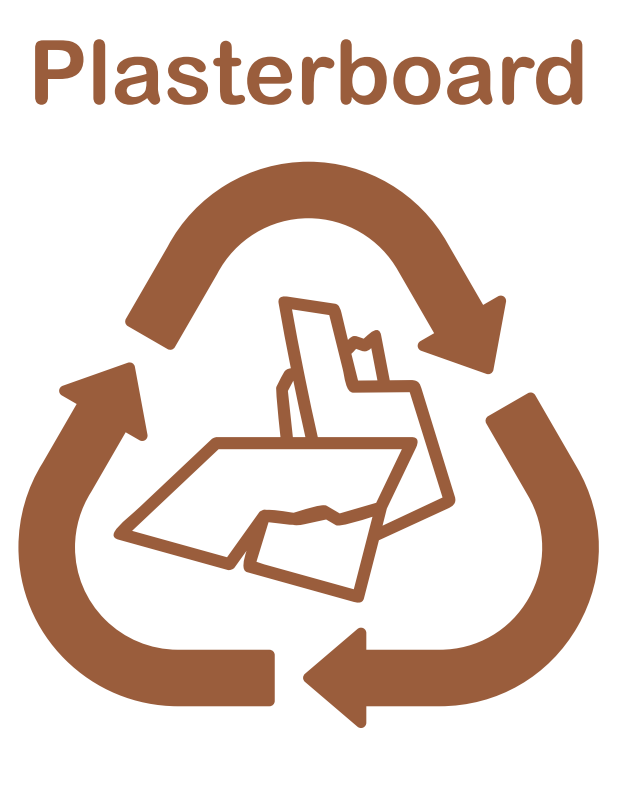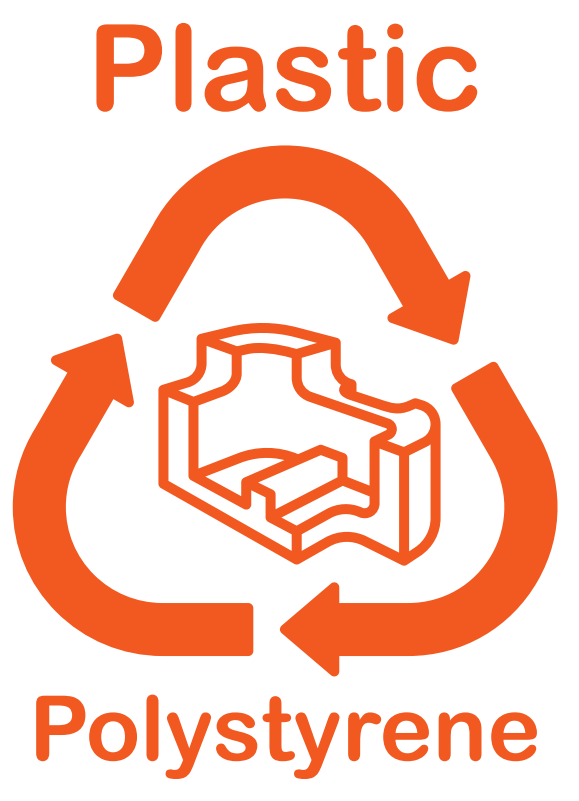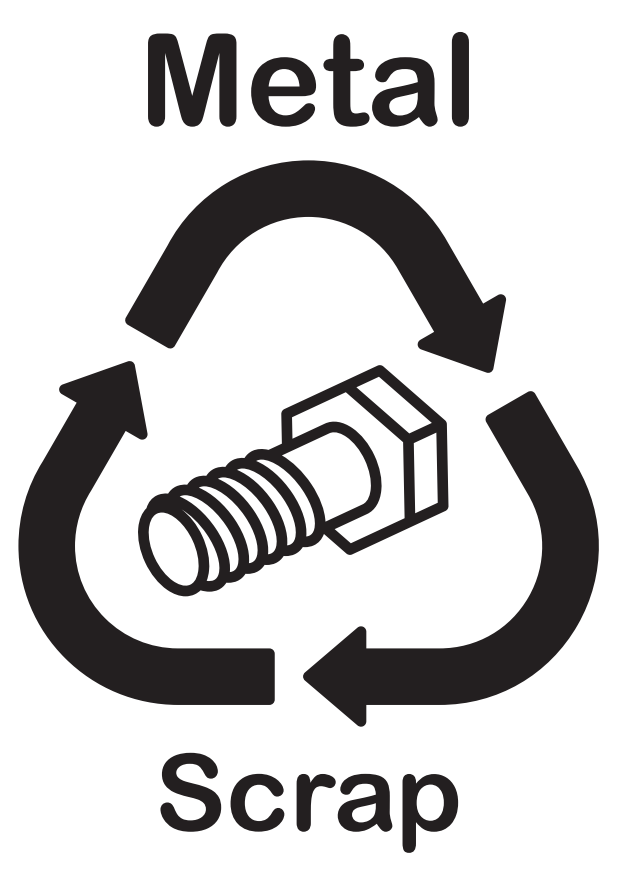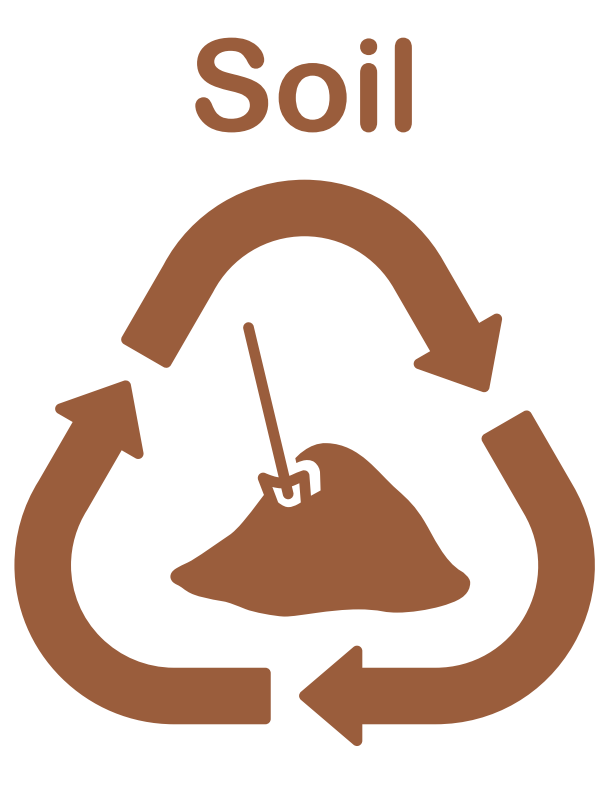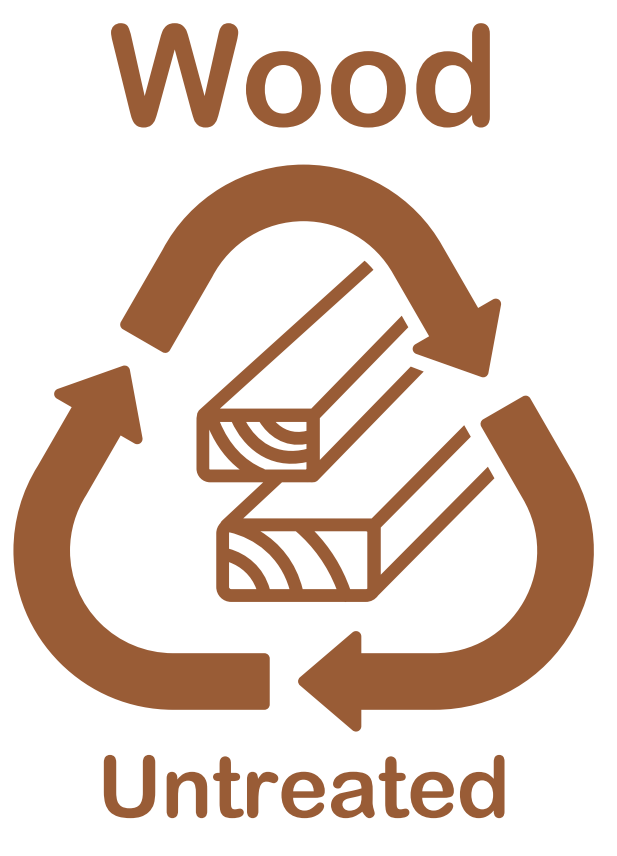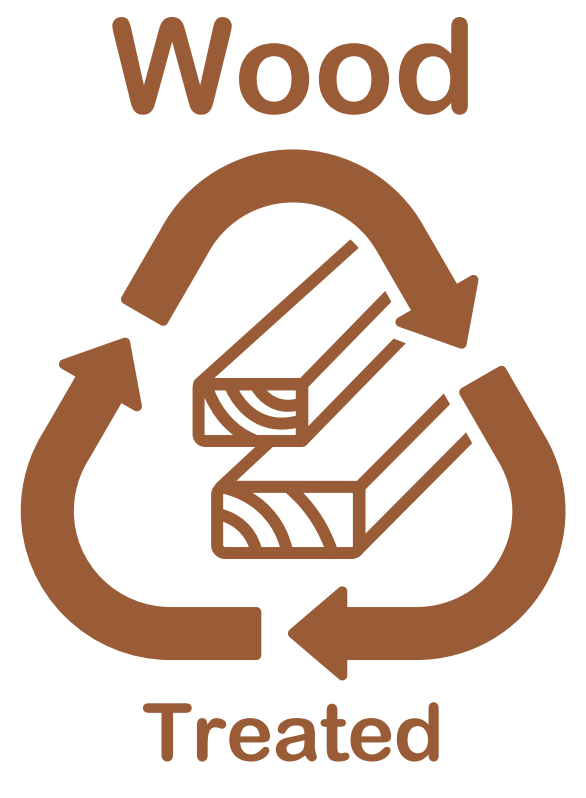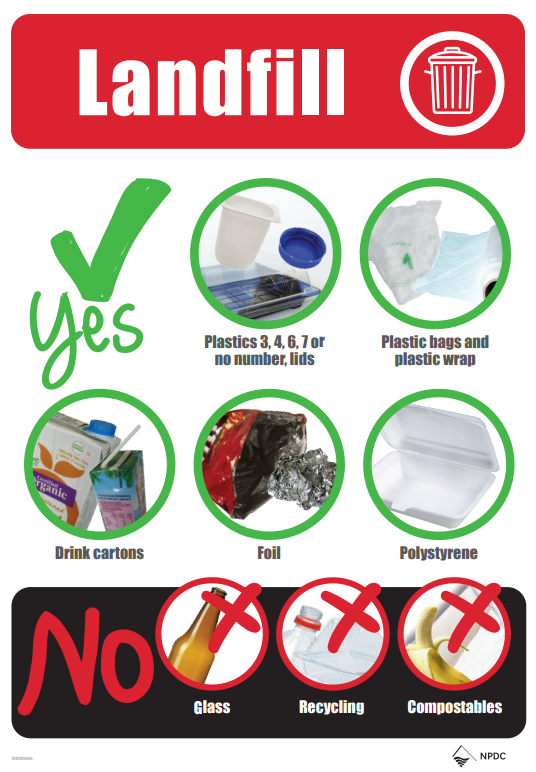How to reduce waste in your business
Minimising and managing waste is a key part of doing business. Read on to learn more about why waste minimisation is great for businesses.
Reduce costs and increase business efficiency
Reducing the amount of waste your business creates leads to a direct reduction in disposal costs. Steps to reduce waste also often lead to budget and time savings, through new ways of procuring and doing business.
Enhance your brand and attract customers
90% of New Zealanders say they would stop buying from a company if they heard about them being irresponsible or unethical (2019 Colmar Brunton Better Futures report). By showing your customers that you are working to reduce waste, you align yourself with customers who want to feel good about what they are purchasing and the businesses they are supporting. Sharing the story about your waste and sustainability efforts enhances your brand.
Grow your competitive edge and win business
Many New Zealand businesses, councils, and government departments are now including sustainability requirements as part of their procurement processes. New Plymouth District Council is working towards Zero Waste to landfill across the District by 2040, while South Taranaki District Council are also working towards Zero Waste.
Attract and retain engaged employees
86% of New Zealanders say it is important for them to work for a company that is environmentally and socially responsible (2019 Colmar Brunton Better Futures report).
Increase innovation and partnerships
Minimising your waste can build new partnerships, a stronger supply chain, and great connections to other businesses, locally and nationally.
Save resources
Reducing waste means less valuable resources are being used, as well as energy, water and the production of greenhouse gas emissions.
How to improve your business waste practice
There are lots of ways to make a difference in reducing waste within your organisation. The information that follows can help your business make simple, targeted changes resulting in big impacts to your business efficiency, the satisfaction of your employees, your competitive edge and customer attraction, as well as reducing your environmental impact.
If you’re in the New Plymouth district contact us to get advice from our Commercial Sustainability Officers.
Click on the drop-down options below to read about three different ways to get started depending on what works best for your business. The 'Keys to ongoing success' section then shares ideas for how to support outcomes over the long term. Bin posters and signs are also available at the bottom of this page for free download and use.
We look forward to celebrating your success!
1. Follow the waste hierarchy
The ‘Waste Hierarchy’ is a targeted way to approach waste reduction. Focusing your efforts at the top of the hierarchy is generally the easiest, most impactful and cost effective way to reduce waste.
REDUCE
The most effective way to manage waste is to have less of it!
- Produce and request electronic publications, newsletters and conference programmes rather than printed versions or mailed inserts.
- Work with your IT team to set up automatic double-sided printing and print release systems (where staff need to press a confirm button at the printer) on all computers.
- Maintain, repair and refurbish electronic equipment, appliances, furniture, vehicles and plant equipment to reduce break downs, waste and replacement costs.
- Shift away from standing stationery orders of set quantities to ordering only when new stationery is requested. One business stopped ordering new pens and through a ‘pen amnesty’ found eight years’ worth of pens already sitting in staff drawers!
- Order tea, coffee, sugar and other consumables in bulk, and top up refillable containers in kitchens.
- Choose gifts or give-aways that are waste free. Gift an experience to get your team out of the office or give vouchers that support local businesses and services.
Is there anything you are receiving or providing that you can refuse, switch or phase out?
- Phase out non-recyclable single use items such as tea stirrers, coffee pods, plastic bags and sachets.
- Request caterers to use reusable trays and lids or covers, or returned containers, to transport catering to your office instead of plastic wrap and plastic containers.
- Ask suppliers to reduce packaging and to not use polystyrene, foam balls, or soft plastic mailers and courier satchels. Instead ask for cardboard/paper packaging or compostable satchels (if you have a commercial compost collection).
- Switch to paper postal satchels, cardboard boxes or home compostable courier satchels for mailing.
- Ask paper and stationery suppliers for print and photocopy paper that is wrapped in recyclable paper or cardboard boxes, rather than non-recyclable plasticised ream wraps.
Sometimes looking at your business systems, inputs or product design with fresh eyes can help you find ways to work with your suppliers or contractors to design products or systems differently to avoid waste in the first place.
- Go paperless with digital filing, tablets and digital signatures.
- Rent a piece of equipment that is only required for a short period, instead of buying new capital items.
- Design or select products to be repairable with replaceable components, so that the whole product doesn’t need to be wasted when one piece stops working or an area starts to wear. Carpet tiles are a good example, meaning tiles in high traffic areas can be replaced instead of the whole room’s carpet.
REUSE
Ensure your suppliers and contracts require regular maintenance, cleaning repair and refurbishment of your appliances, carpets, electronics, furniture and fleet vehicles, to extend their life.
You can also transition to reusable products that will avoid ongoing consumables costs, as well as reducing waste and the use of new resources.
Common reusable items businesses can switch to instead of single use items include:
- Washable cups, glasses, crockery, teaspoons, water bottles, water jugs, serving platters and covers.
- Sealable containers of unpackaged tea bags, coffee and sugar.
- Refillable printer and toner cartridges, whiteboard markers and pens.
Re-homing usable items such as furniture, IT equipment or stationery with other organisations, schools or community groups is another great way to extend the life of existing products.
Download a guide to local repair and reuse avenues here. You may also have your own networks or relationships that can be built on to re-home items within your local school or a charity you already support.
RECYCLE
Once you have taken all the steps to avoid and reduce waste, and reuse items, the next option in the hierarchy is recycling.
The reason recycling is further down the hierarchy is that it has costs – costs to your business as well as to the environment. It takes new resources, time, energy and greenhouse gas emissions to collect, transport and reprocess materials. Plastics and paper can only be recycled a limited number of times, as their quality is reduced each time, and ultimately they will become waste. Recycling is also only viable if there is an end market and demand for those materials.
However, wherever there are items your organisation is sending to landfill that could be recycled instead, these should be collected for recycling.
Recycling services exist for cardboard, paper, secure document destruction, plastic containers grade 1 and 2, tins, cans, scrap metal, batteries, e-waste, toner cartridges, mobile phones, fluoro light tubes, plastic wrap, pallets, concrete, paint, chemicals, perspex, PVC pipe, polypropylene bags, sawdust, tyres, untreated wood, and other materials.
Download a guide to New Plymouth recycling collectors here to find commercial recyclers for common and specialist product types that can be recycled. Council cannot recommend specific providers, so this is a starting reference only. Keep in mind that other providers will also be available.
It’s important your staff and customers are aware of exactly which items can be recycled. Download posters for your bins at the bottom of this page, which feature visual images of example products.
RECOVER
Depending on your business type, number of staff and whether you provide food or tea and coffee, more than half of your waste going to landfill can be organic matter that can instead be diverted to composting. This avoids greenhouse gas emissions from organic matter breaking down without oxygen in a landfill, creates jobs and benefits for primary producers, and recovers resources for ongoing local nutrient cycling.
There are several ways to divert food and organic matter.
- Donate edible food to organisations who share it with those in need such as On The House, Food Bank, Kai Kitchen, or local community or church groups.
- Give away coffee grinds and food scraps to home composters or gardeners, via your staff, customers, or local ShareWaste hosts.
- Arrange a pick up from a local pig farm. (Note that MPI regulations require donations to pig farms to not contain meat, or if meat is included, to be treated by the pig farmer before being fed to pigs).
- Organise a commercial compost collection with a local provider, returning valuable organic matter to the soil. Commercial compost collections can include compostable packaging, paper towels and food-stained paper, as well as compostable containers, cups, cutlery and straws, along with food scraps.
- Organise a commercial green waste collection for garden waste, or take green waste to a Transfer Station for composting.
- Set up an on-site compost or worm farm if you have outside space or gardens.
- Set up a Bokashi bucket, for a staff person to take home for composting or burying when full.
2. Embed waste minimisation across your business
Within your organisation there are teams and roles that can take easy steps to reduce waste as part of their day to day work.
Click below to learn about how waste reduction can be led and embedded within different teams and departments in your business, to make waste reduction part of your standard business practice.
Procurement, administration
Incorporating waste minimisation into your purchasing policy and selection criteria will help achieve waste improvements across your business, as well as your wider supply chain.
Work with your purchasing, administration, office management or facilities staff to select products that:
- are reusable rather than disposable
- will last and are repairable
- have recycled content, to support the market for recycling
- are recyclable or compostable (if you have a commercial compost collection).
Contract managers, IT
Discuss with contractors, suppliers and tenders providing or moving towards:
- Using less packaging, taking back packaging, or using only recyclable or compostable packaging (if you have a commercial compost collection).
- Maintaining and repairing products through their use period, to extend their life and reduce replacement costs.
- Taking back products at the end of their life, to ensure components are salvaged, remanufactured and on-sold/gifted, or recycled.
Catering, events, gifts
Without planning, events can generate large amounts of waste, and send the wrong message to your customers and stakeholders about your prioritisation of sustainability.
- Buy or rent a fleet of reusable crockery, cutlery, water jugs and glasses to avoid single use items.
- Ask caterers to supply reusable platters and covers which get returned to them, or recyclable or compostable catering ware.
- Select gifts or prizes that have no waste, such as emailed vouchers. Or chose quality reusable items such as water bottles, coffee cups, bags and totes. Alternatively, select gifts made from environmentally preferable materials that can be recycled or home composted at the end of their life.
Sustainability or Facilities/Property
- Develop rehoming partnerships. Your no-longer needed furniture, stationery, IT equipment, appliances, usable food or ‘waste’ products may be very valued gifts local charities, not-for-profits, community members, schools, kindergartens or smaller businesses would love to receive. See our guide to local reuse avenues here for initial ideas, or start talking with potential local partners about their needs and an ongoing relationship for on-gifting.
- Remove individual landfill bins and set up central ‘waste stations’, with a coloured-coded bin for each waste stream.
- Place clear signage above each bin. Visual signs at eye height with photos of example products are much more effective than word-based signs.
- Engage and educate your staff. Feed back on progress in team/staff meetings or newsletters, showcase positive behaviours taken by staff with photos in newsletters or the intranet, encourage healthy competition between teams with mini action campaigns, and thank staff for taking action to reduce waste through positive language, promotions, spot prizes or awards for staff ‘doing good’.
- Engage and educate your customers, stakeholders and supporters. Make your waste reduction steps visible with a public-facing recycling station and signage, telling your story on your website or social media, and bringing your stakeholders with you.
Communication/Marketing
There are simple selections your marketing or comms team can make to reduce waste and environmental impacts. Digital instead of print publications can significantly reduce costs as well as paper and ink use, and paper waste.
When hard copy publications are required opt for summaries printed on non-glossy paper made from recycled paper and avoid full-colour backgrounds to reduce ink use.
Give aways, branded items and prizes can also be selected to avoid landfill waste, such as gift vouchers to support local businesses, reusable cups, or useful items that can be recycled or home composted at the end of their life.
HR
Human Resources can play a key role in supporting a Zero Waste culture by including content on waste reduction and sustainability in inductions for new staff and training sessions or workshops for established staff.
Incorporating waste responsibilities in position descriptions and staff development plans also helps implement progress on waste reduction across your business.
If you organise staff rewards or give-aways make them desirable items like reusable coffee cups or refillable drink bottles.
Management
- Make waste and sustainability a priority. Let your staff and customers know waste reduction is a priority for your business by including it in your core documents, website, communications and events. Setting aside staff resources and some budget is also important to enable your business to make progress, beyond intention and marketing. Your own choices can also be a powerful model for team culture, with simple signals like using a reusable coffee mug instead of a takeaway cup or choosing suppliers who are leading the way in reducing their environmental impact.
- Support staff leadership on sustainability. You will very likely have people in your team who are passionate about reducing waste. Give them the scope to help design solutions and implement them to bring a range of benefits to your business. In the process you’ll likely increase the satisfaction and commitment of your people – one of your most important resources.
- Develop partnerships with other businesses. What inputs do others need, or would they like to source locally? Your waste products may be more useful than you think for other producers! How could you collaborate to reduce waste, share costs or help create a local circular economy solution others can benefit from?
- Learn from others. What are similar businesses doing to reduce their waste? What’s worked and hasn’t worked? Talk with other business owners and business networks to learn more, and come along to a NPDC business waste event to learn from other businesses.
3. Gather a waste reduction team
It can work well to form a small team to guide your waste reduction efforts with representatives from across your organisation. This ensures you have input from different areas of your business as well as diverse skills and a distributed workload.
In larger organisations ensure you have staff from Facilities, Procurement, administration, sustainability, IT, finance, management and other key areas. In a workshop or several meetings go through these guiding questions to decide what your key waste issues are and where it makes sense for you to start.
o What’s our biggest waste issue?
What type of waste do you have the most of? What fills up your landfill skips or wheelie bins?
A visual look in inside bins and wheelie bins can tell a lot as can a simple ‘bin tip’, dividing waste into piles of what could be avoided, recycled or composted instead of going to landfill.
You can also request a yearly report from your waste contractor at any point, or get them or an external contractor to help you undertake a waste audit.
o Do we share usable items instead of landfilling them?
Are all usable items (furniture, IT equipment, food, stationery, building materials etc) gifted or on-sold instead of going to landfill?
Download the guide to reuse avenues in the New Plymouth district here to find further reuse options.
o Do we have a collection for all recyclables and compostables?
Do you have recycling collections for co-mingled recycling (paper, cardboard, plastic containers 1-2, tins and cans), cardboard, paper, e-waste, fluoro light tubes, batteries etc?
Is a commercial compost collection needed for food, papertowels and compostable packaging?
Consult our guide to find local recycling and composting services to learn more on which providers are available to collect a wide range of items for recycling and commercial composting.
o Do we have a bin for each waste stream in a combined bin station in central locations?
If you provide only landfill bins to staff and customers all resources will go to landfill.
Set up a waste station on each floor, with a set of signed bins for each collection type. Ideally colour code your bins with yellow for recycling, grey for paper, green for compost, blue for glass and red for landfill.
Phase out individual-under desk landfill bins and replace them with a temporary storage cube, which staff can take to their closest waste station to sort. You’ll save on cleaner time and costs, and on bin liner bags too!
o What are our ‘easy wins’?
What is something we can make quick progress on to reduce, recycle or compost waste?
For example, a café may choose to organise a free pig farm and cooking oil pick up as well as their mixed recyclables collection. While an office may find that recycling paper and cardboard is their easy win, at the same time as introducing paperless policies, automatic double-sided printing, and a print release system.
o What is our most worrying or high profile waste issue?
What bothers your staff or customers, or is a reputational risk? What waste is most visible and worrying to your customers? Where are you being left behind by similar organisations, competitors or social norms?
o What opportunities could we act on?
What waste stream or wasted product provides us with an opportunity? Could you give it away, have it freely collected, sell it, or provide it as an input to another business? Also look for upcoming events that could be a springboard for change, such as a new contract, strategic planning, or a public event that can showcase your new waste stations.
o Where could we reduce costs?
How much are we paying for waste annually? What reuse innovations can save us money in ongoing consumables? If waste is reduced, what could that budget be used for, to help grow our business or incentivise our staff?
o What help do we have available?
What help can your waste collector provide you with waste audits? Is there interest in joining NPDC’s Business Waste Programme, or coming along to a networking or learning event?
If you operate in South Taranaki or Stratford districts, have you discussed options for support from Council’s waste/sustainability team?
Keys to ongoing success
Once you’ve decided on a number of priority actions to start with in a simple action plan, the following steps will help support your success in the longer term.
Get management support
Discuss areas such as the benefits of proposed changes and how these align with organisational priorities, required support, possible savings, projected costs, requested budget and resources, and how you will report progress and celebrate and promote achievements.
Find champions in each team or site
Ensure your progress isn’t reliant on just one or two keen staff or your organisation's efforts will likely fall over when they leave. Champions can help roll out changes, observe uptake by staff, engage their team mates and celebrate progress. Build time and recognition of champions' work on waste reduction into their role and goal setting and recognise and reward the contribution they are making.
Share the message
Ensure you make waste reduction initiatives visible to staff and contractors. Craft tangible requests and images that have a positive tone to help bring your staff, customers and stakeholders along with you.
Ideally incorporate photos of your people taking the requested action/s to help spread a ‘social norm’. Keep things simple with just one or two ‘asks’ at a time to help people take up a new behaviour and make it an ongoing habit. A communications plan or calendar can help stage your messaging over the year.
Ask for input and further ideas
Invite your colleagues and customers to contribute. You’ll likely receive a wider range of great ideas you hadn’t considered, as well as increasing buy in and loyalty. As well as emails and in-person events, you can use surveys, a suggestion board or box, idea competitions, or a brainstorming chart in staff areas or kitchens.
Measure your progress
Make sure you capture your current waste practice, volumes, weights and collection costs before you get started on improvements so you can document the improvements and savings you make over time (make sure you have a way to collect data over time).
Make changes relatable for staff with high level percentages (“we’ve cut our waste to landfill by 30% compared to January”) or number of wheelie bins (“we’ve now removed two wheelie bins of landfill waste from our collection each week”).
Celebrate successes
Tell the story of how things are changing! This is really important for engaging staff and ensuring you balance what is being asked of people with recognition and positivity. Ideally capture images of staff ‘doing good’ as part of your feedback on progress being made.
Review and plan further improvements
What are your next easy wins? What is the next action you’ll ask staff to take this quarter? This can tie into the time of year (i.e. ways to reduce waste at Christmas, reusable water bottles for summer etc), a thematic area (e.g. selecting low waste print and promotional products for a new brand or product launch), or a business priority (such as reducing costs on standing stationery orders by asking staff to return unused stationery from drawers, or increasing the visibility of your waste reduction steps with customers and the wider community).
Continue to implement improvements
A continuous improvement approach in all business areas is key to making waste reduction part of the way you do things across your organisation.
Make sure waste separation is covered in your induction for new staff and contractors, progress is discussed at staff meetings, and waste or sustainability requirements incorporated into your Purchasing Policy, tenders, contracts, and purchase orders. A Waste Policy also helps set clear expectations for all staff, particularly accompanied by a succinct Action Plan.
Downloadable resources
Click on the drop down arrow to the side to find the following resources for free download.
- Guide to commercial reuse, recycling and recovery options in the New Plymouth district
- Overview of New Zealand recycling symbols
- Guide to indoor bin stations and bin suppliers
- Guide to outdoor bin stations and bin suppliers
- Mixed recycling poster
- Mixed recycling icon (for recycling bin lid/front)
- Paper recycling poster (for above paper recycling bins)
- Paper recycling icon (for paper bin lid/front)
- Cardboard recycling poster (for above cardboard recycling bins/collection place)
- Cardboard recycling icon (for cardboard bin/trolley)
- Glass recycling poster (for above mixed glass recycling collection point - to be sorted into bins)
- Clear glass recycling icon (for clear glass bin lid/front)
- Brown glass recycling icon (for brown glass bin lid/front)
- Green glass recycling icon (for green glass bin lid/front)
- Compostable/Organics poster (for above compostable bins)
- Food and compostable packaging icon (for compostable bin lid/front)
- Paper towel poster (for above paper towels and other compostables bins)
- Paper towel icon (for paper towel bin lid/front)
- Concrete blocks and rubble icon (for collection area/bin on building site)
- Plasterboard/gib icon (for collection area/bin on building site)
- Polystyrene icon (for collection bin)
- Scrap metal icon (for collection bin)
- Soil icon (for collection area/bin on building or landscaping site)
- Wood - Untreated icon (for collection area/bin on building site)
- Wood - Treated (for collection area/bin on building site)
- Landfill waste poster (for above landfill bins)
- Landfill icon (for landfill bin lid/front)
View our A-Z Zero Waste Directory
Find local options for donating, recycling and disposing your items safely and correctly.

